First thing I find when looking at the proposed new Climate Zones, is that in going from the current (somewhat silly) three Zones for Climate, they have instead gone for Six zones, nicely colour-coded, from Red for Hot in Zone 1, down through the rainbow of orange and yellows and greens, to end up with a cold southerly Blue for Zone 6. Brrrr!!! Chilly!!
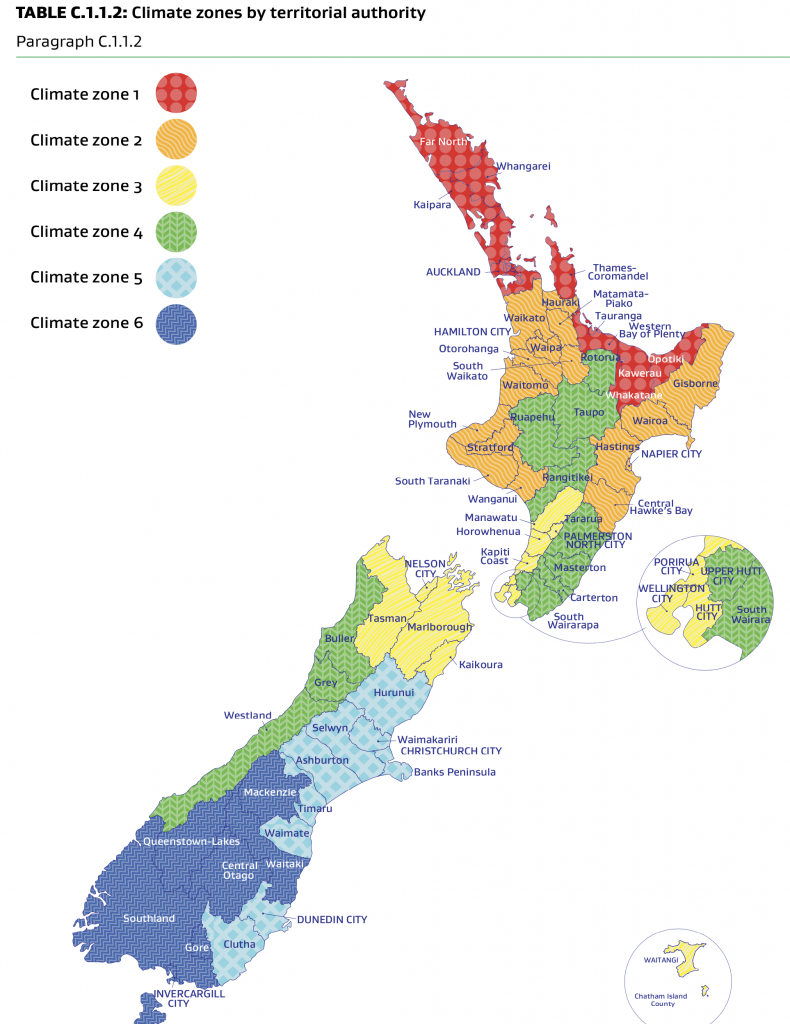
My question is – does this really make sense? Overall, there is definitely some great logic in creating new zones, but on what basis are the zones organised? Some parts look a little iffy to me. Just saying: has MBIE really done their homework well?
Have a look at two areas in particular – Rotorua / Whakatane area for one, and Kapiti / Wairarapa for another. This is what they propose:

Hmmm. I know that those irritating people on the Kapiti Coast say that they have a different / better micro-climate than those of us in Wellington, but is it really right to single out Upper Hutt and say they are different? Two points to consider: Geographically, Wellington, Hutt City and Upper Hutt are all bound by the same hills, so (having not done the homework) I’m surprised that Upper Hutt would be classified as different. Politically however, seeing as one day it is almost certain that the two Hutt and Wellington will combine into one organisation, it seems a bit perverse to apply different standards to half that new city but not the rest.

Also, Kapiti and Horowhenua being the same zone as Wellington and Porirua? Hmmm indeed. I’m thinking: Not quite right here. And then you get the situation up in the Bay of Plenty, where Tauranga and Whakatane are basking in the Zone One boiling hot temperatures of Northland, whereas just a short drive away in Rotorua, they are in the Boiling Mud temperatures of Zone Four – the same as the Wairarapa and Westland. Hold on a sec: WESTLAND ??!!?!?!?! Greymouth, Buller, soggy, wet, eternally raining, damp, moist, and almost always damn cold – twinned with Rotorua? The town where redwood trees flourish because it is so damned warm?
Are you sure you have done the maths right, MBIE?
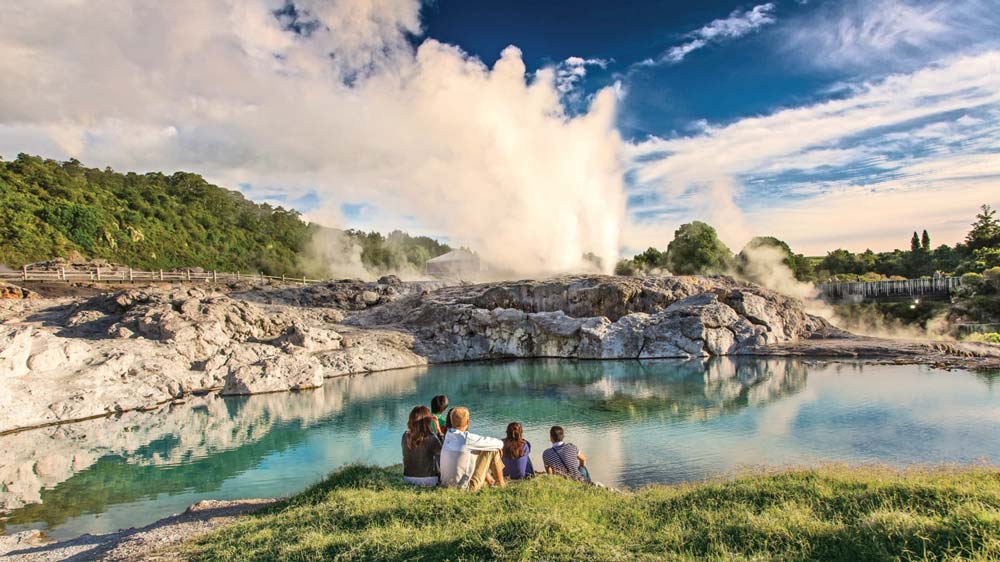
Also – Chatham Islands, twinned weather wise with Marlborough? That would be the eternally raining and always cloudy Chathams twinned with the never raining, always sunny Marlborough?
Are you 100% sure these zones are right, MBIE? And then there is minor quibbles, like East Coast vs West Coast, ie Hawkes Bay vs Taranaki. Yes – that would be the same Hawkes Bay where they had a drought for the last 3 years, and placing that in the same climate category with a province where the numerous dairy cattle get foot-rot from so much moisture in the pasture.

The reason why – well, one of the reasons why this all matters so much, is that there are significant costs that rest on this. Here’s the overall page, with the various colours and the three option ranges – and the effects on costs.
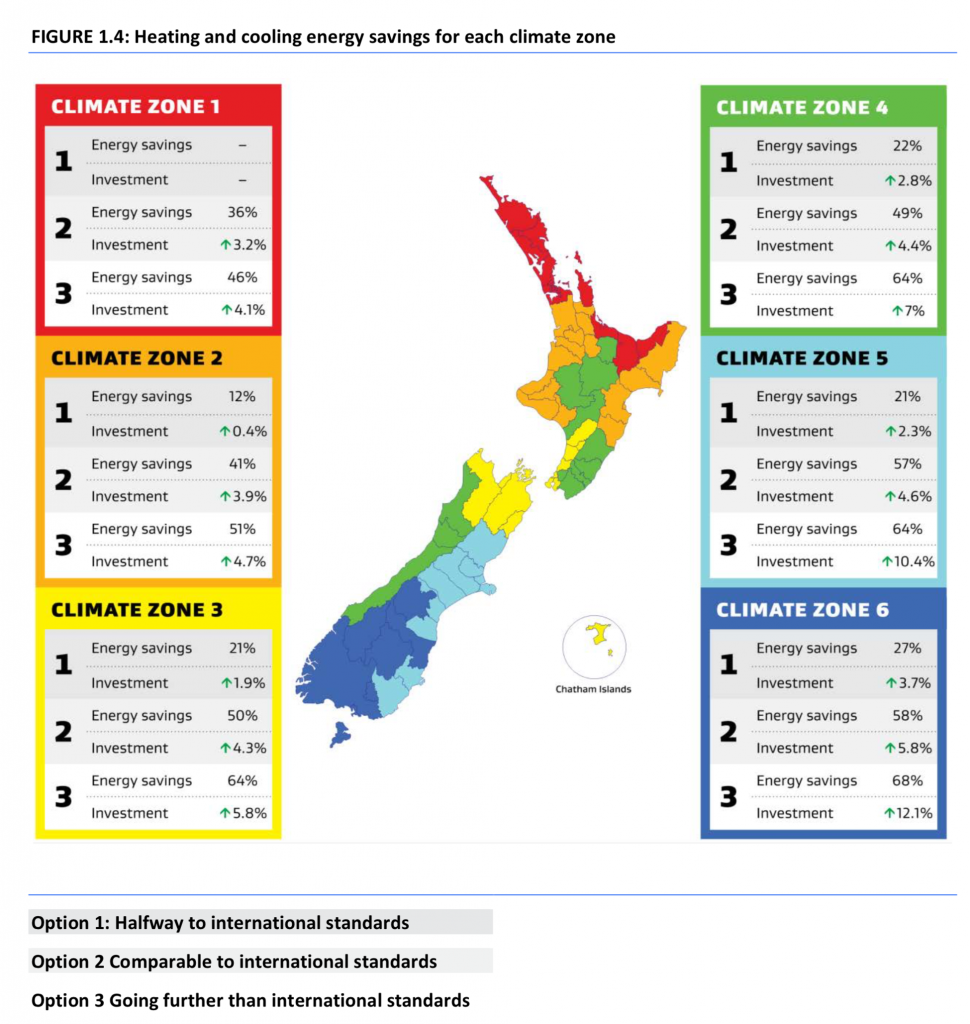
Looking closely, here is the Yellow Zone Three estimated increase in costs for us folk in Wellington.
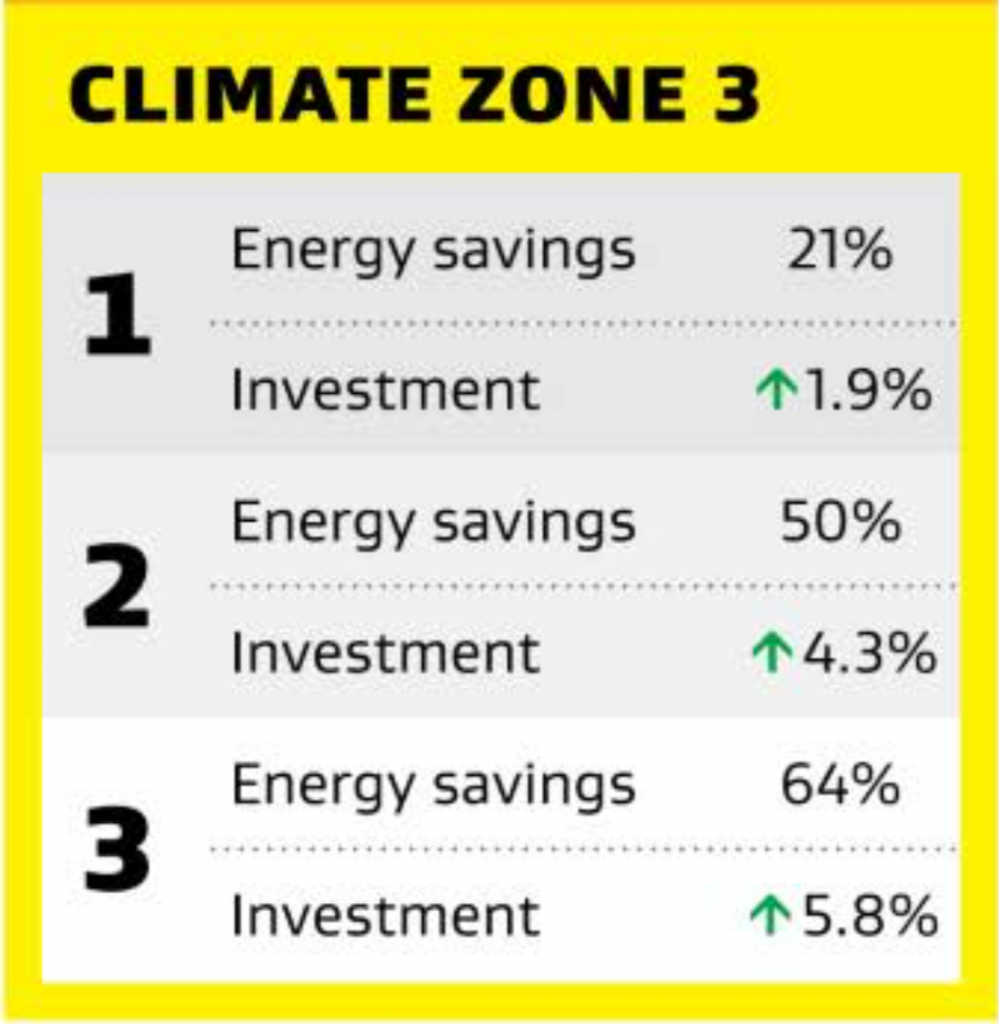
And here it is in Auckland, where it is so warm that it really doesn’t matter, and so increased costs are minimal.
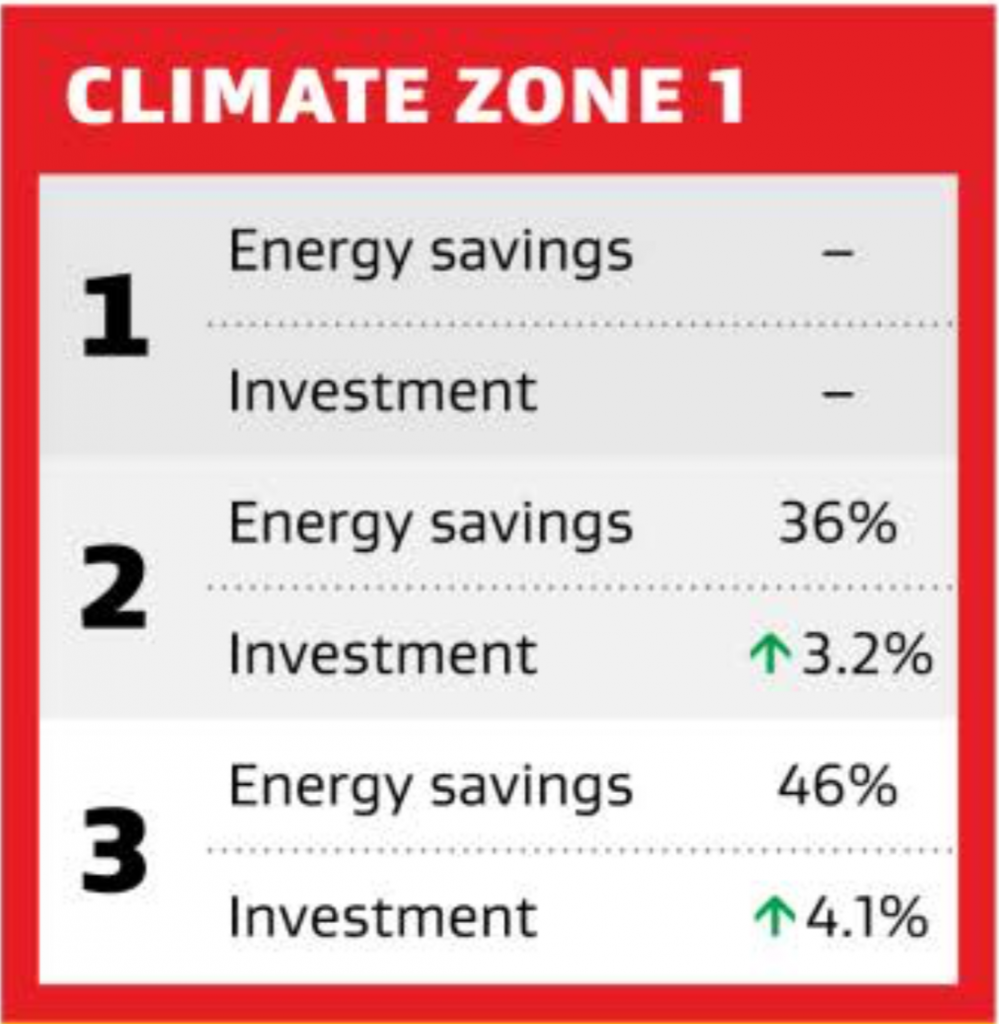
But the real kicker for some people, I guess, will be that down in the Deep South, they’re going to be looking at a 12% increase in costs, along with a 68% increase in energy savings.

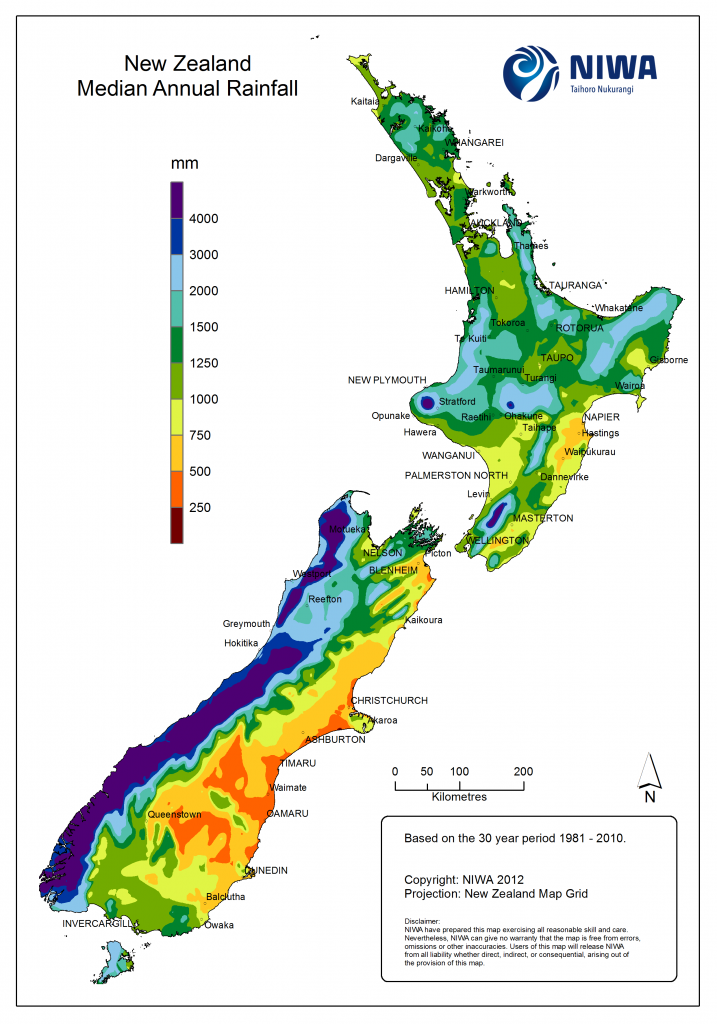
So why does all this matter? Well, here’s why: walls, roofs and windows, people. NZ has long been way behind the rest of the so-called “West” (even though we are quite a bit East and very much South) and our standards are bad. Poor. Terrible. Lax. Real Bad Hombres. Here is how we currently compare with our Roof insulation levels:
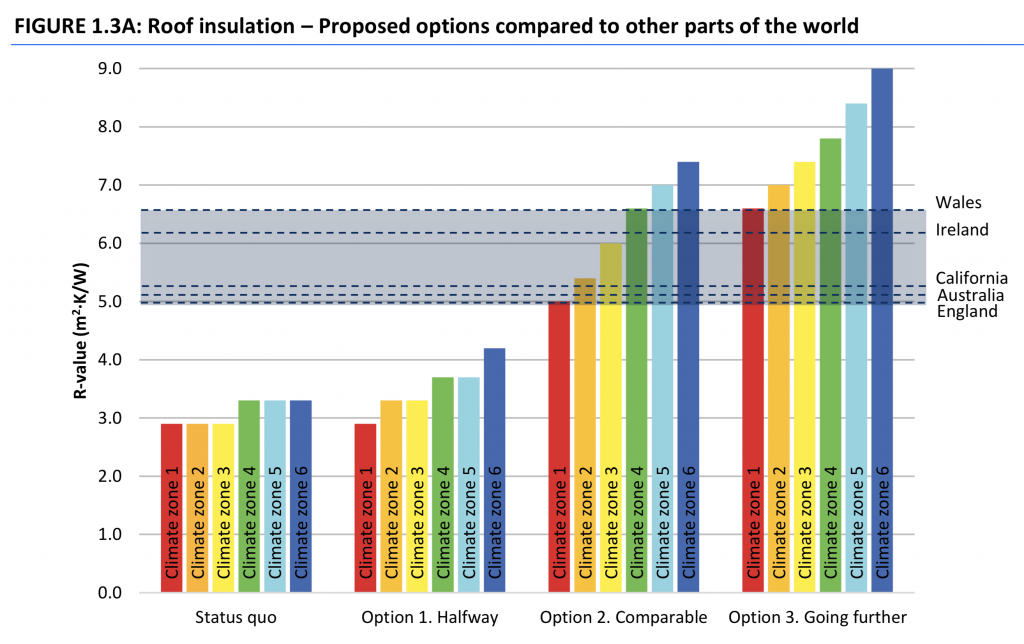
Clearly, we need to take at least Option 2 on increasing Roof Design Insulation levels. And this one below here is how we compare with our Windows. No wonder our windows are dripping with condensation:
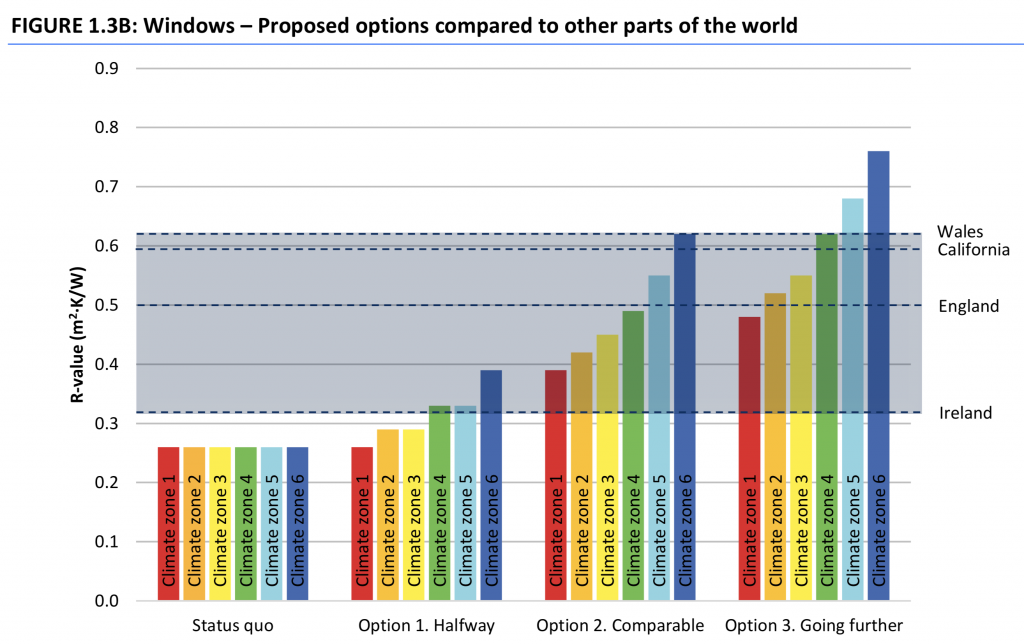
But the real problem area to me is our current standards of Wall insulation. Here we need to not just got for Option 2, but to plump all the way for Option 3, even just to stay in the same range as the others.

So there you have it – for now at least. Remember that Consultation closes on May 28th, so you have precisely ONE WEEK. Here’s a link to the Form. Do it now !

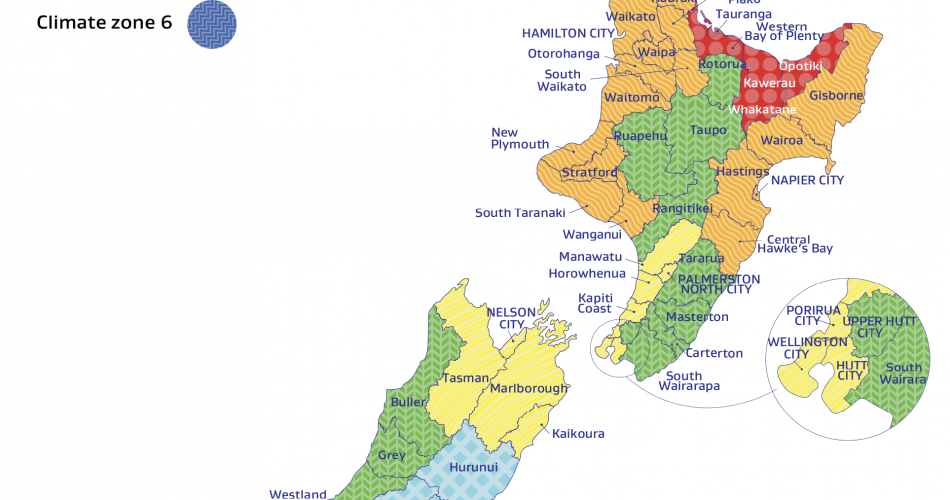



These “zones” are way too arbitrary, and basing them on territorial council boundaries is a mistake IMHO,
Reasoning… Houses in places like Rotorua will now be spec’d the same as places in Ohakune/National Park/Taumaranui… now anyone who has been to either of those places in Winter will tell you it is cold… like really cold…. Rotorua lakes not so much….- The central plateau should have the same ratings as places in the South
The council boundaries also mean places on the coast like Waitaki, have the same requirements as Naseby (yes the one that has the “bon speil”) .. but Dunedin city which is further south has less strict requirements because it has no major inland portion….
Climate doesn’t care about council boundaries.. and they should not be used to mandate reqreuiemnts…
Totally agree with you on that Greenwelly ! I wonder if they will take any notice of us if we submit that info to the MBIE….?
Upper Hutt can get damn cold…